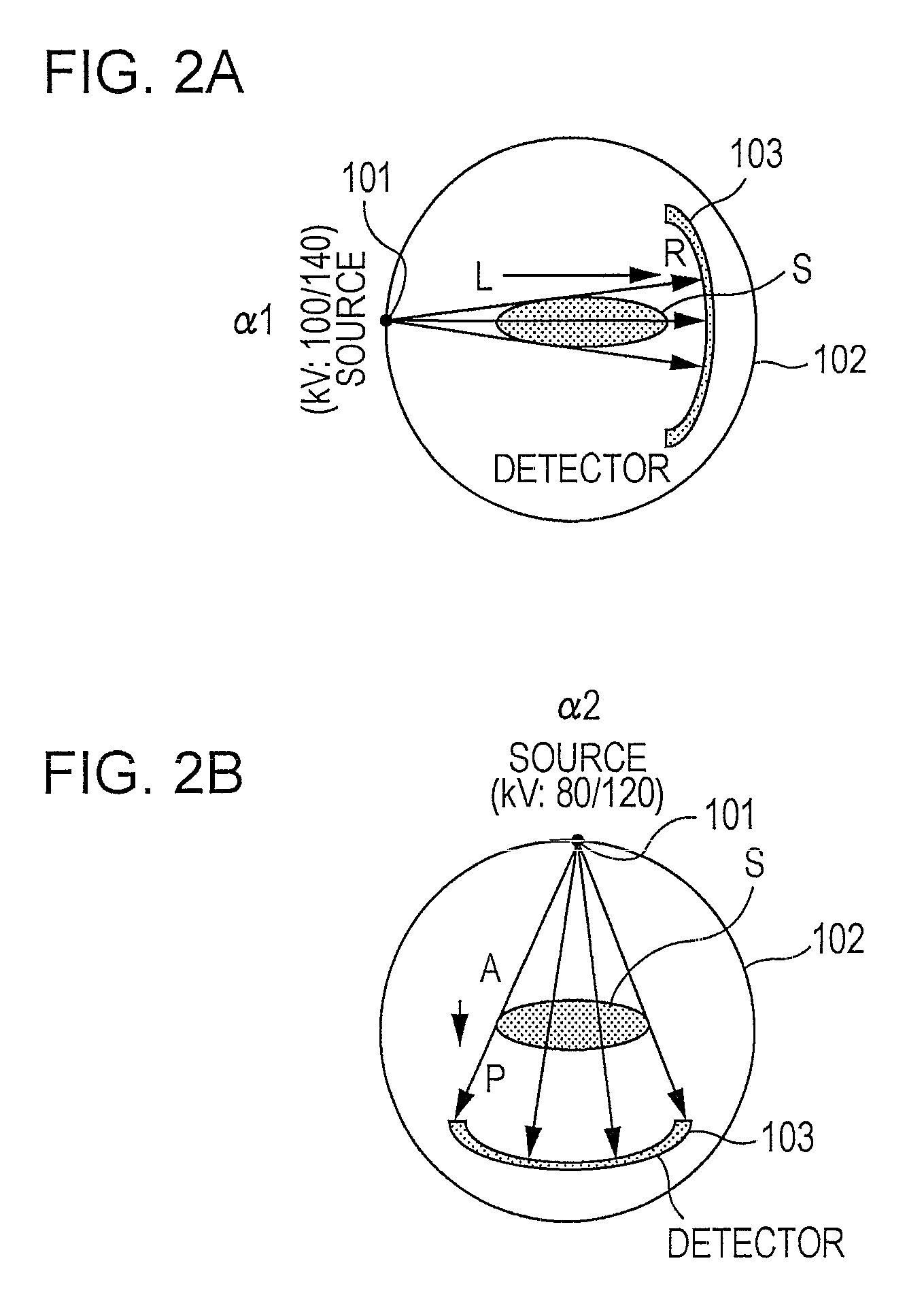Voltage and or current modulation in dual energy computed tomography
a dual-energy computed tomography and current modulation technology, applied in tomography, material analysis using wave/particle radiation, instruments, etc., can solve the problems of patient overexposure or underexposure, image quality suffers from artifacts, and prevent optimal data acquisition, etc., to improve dose efficiency, reduce noise, and eliminate beam-hardening artifacts
- Summary
- Abstract
- Description
- Claims
- Application Information
AI Technical Summary
Benefits of technology
Problems solved by technology
Method used
Image
Examples
first embodiment
[0068]The following five exemplary embodiments have been considered with respect to the above described exemplary processes according to the current invention to illustrate certain combinations of the dual energy data acquisition techniques and the voltage and or current modulation. These embodiments are illustrative only and do not limit the scope of the current invention as claimed in the claim section. A first embodiment utilizes the voltage modulation in the slow kV-switching dual energy CT where either one of low and high energy scans is followed by the other one of low and high energy scans, and the X-ray source generates two separate spectra of X ray. In each scan the voltage of the X-ray source is independently modulated with respect to views to obtain projection data at improved dose efficiency. Optionally, in each scan the voltage and the current of the X-ray source are each independently modulated with respect to views to obtain the required image quality with reduced noi...
second embodiment
[0069]A second embodiment utilizes the voltage modulation in the fast kV-switching dual energy CT where the neighboring views correspond to low energy and high energy acquisitions. The X-ray source generates two separate spectra of X ray. The voltage of the X-ray source is modulated with respect to views to obtain projection data at improved dose efficiency. Optionally, the voltage and the current of the X-ray source are each independently modulated with respect to views to obtain the required image quality with reduced noise at optimal dose efficiency. In the neighboring views, the energy separation between the low and high voltage should be sufficient enough to guarantee a stable decomposition.
third embodiment
[0070]A third embodiment utilizes the voltage modulation in the dual energy CT with a dual layer detector where only one, but wide, source spectrum of X ray is required. The first and second layers of the dual layer detector respectively output the low and high energy signals. The voltage of the X-ray source is modulated with respect to views to obtain projection data at improved dose efficiency. Optionally, the voltage and the current of the X-ray source are each independently modulated with respect to views to obtain the required image quality with reduced noise at optimal dose efficiency.
PUM
| Property | Measurement | Unit |
|---|---|---|
| sizes | aaaaa | aaaaa |
| sizes | aaaaa | aaaaa |
| sizes | aaaaa | aaaaa |
Abstract
Description
Claims
Application Information
 Login to View More
Login to View More - R&D
- Intellectual Property
- Life Sciences
- Materials
- Tech Scout
- Unparalleled Data Quality
- Higher Quality Content
- 60% Fewer Hallucinations
Browse by: Latest US Patents, China's latest patents, Technical Efficacy Thesaurus, Application Domain, Technology Topic, Popular Technical Reports.
© 2025 PatSnap. All rights reserved.Legal|Privacy policy|Modern Slavery Act Transparency Statement|Sitemap|About US| Contact US: help@patsnap.com



